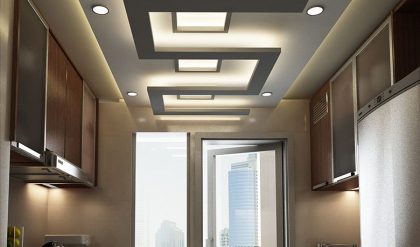
Americans need safe, affordable, and high-quality buildings to thrive. From the homes in which we live to the businesses in which we work, the condition of our buildings directly affects the quality of lives. Yet current construction methods often make buildings more expensive and less desirable. In particular, lagging construction sector labor productivity increases the cost of new buildings and retrofit upgrades while limiting the use of energy-efficient technologies in these projects. To solve these challenges, many U.S. construction companies are utilizing new practices that combine advanced off-site manufacturing of building components with streamlined delivery and installation methods.
The U.S. Department of Energy’s Advanced Building Construction (ABC) Initiative, led by the Department’s Building Technologies Office (BTO), integrates energy-efficiency solutions into highly productive U.S. construction practices for new buildings and retrofits. The ABC Initiative is developing building technologies that can be deployed quickly with minimal onsite construction time, are affordable and appealing to the market, and leverage related efforts to increase the productivity of the construction industry. In addition to funding research on technologies, software, and digitization, the ABC Initiative coordinates key building sector stakeholders to tackle related challenges, including workforce training, business models, demand growth, and service delivery.
Low Construction Productivity Limits Building Performance
Building construction practices have remained largely the same over the past century. While other industries such as manufacturing and communications have transformed through digitization and process improvements, productivity in the U.S. construction industry has consistently declined since 1968. A 2017 report from the McKinsey Global Institute identified several contributing factors for low overall construction sector productivity, including underinvestment in innovation, industry fragmentation, and insufficient skilled labor.1

Research from the McKinsey Global Institute shows that while labor productivity has significantly increased in other sectors, productivity in the U.S. construction industry has declined since 1968.
Lagging construction productivity directly increases costs, contributing to the nation’s affordable housing crisis and burdening U.S. businesses with more expensive real estate. Higher upfront construction costs also often lead building owners and investors to forgo the latest energy-efficiency technologies, even though these technologies decrease the total cost of operating and maintaining new buildings. Through advanced building construction techniques like off-site manufacturing, robotics, and digitization of building design and construction processes, new construction projects can be completed more quickly and affordably while achieving dramatically better energy performance.
Existing buildings also are affected by lagging productivity in the construction sector. While about 1 million new buildings are built each year in the United States, the country has more than 125 million existing buildings.2 More than half of this existing building stock was built before 1980, prior to modern building codes that require improved energy performance. Very few of these older buildings undergo deep energy-efficiency retrofits that can achieve dramatic improvements in whole-building performance and comfort. In leading jurisdictions, only 1.75% of homes3 and only 2.2% of commercial real estate4 are retrofitted each year. These rates are too low to provide the majority of Americans with high-quality housing and workplaces. Advanced building construction techniques can help give more Americans access to high-performance buildings by making retrofits faster, more affordable, and more appealing to building owners and occupants.
Integrating Improved Construction Productivity and Building Energy Performance
Recent advancements in manufacturing, fabrication, materials, and logistics hold the potential to transform the U.S. construction industry. The National Institute of Building Sciences’ Off-Site Construction Council highlights several productivity benefits of such approaches, including improvements in scheduling, price, quality, and safety.5 While prefabrication and other off-site construction methods have existed in the United States for decades, venture capital firms and leading technology companies have recently started to invest heavily in startups developing off-site “disruptive innovations” that shift construction from the building site to the factory. Given these trends, future construction techniques will likely be very different than current methods.
The U.S. Department of Energy’s Advanced Building Construction Initiative will help ensure that ongoing innovation in the construction industry incorporates energy-efficiency technologies for superior building performance. While improved construction productivity is very important for the country and worldwide, it is also critical for the construction industry to integrate solutions for deep energy efficiency, grid flexibility, and lower lifecycle impacts. By working with stakeholders from across the buildings industry, the ABC Initiative will ensure that greater construction productivity also leads to buildings that are smarter, healthier, more sustainable, more resilient, and more responsive to the needs of their occupants.






Comments are closed.